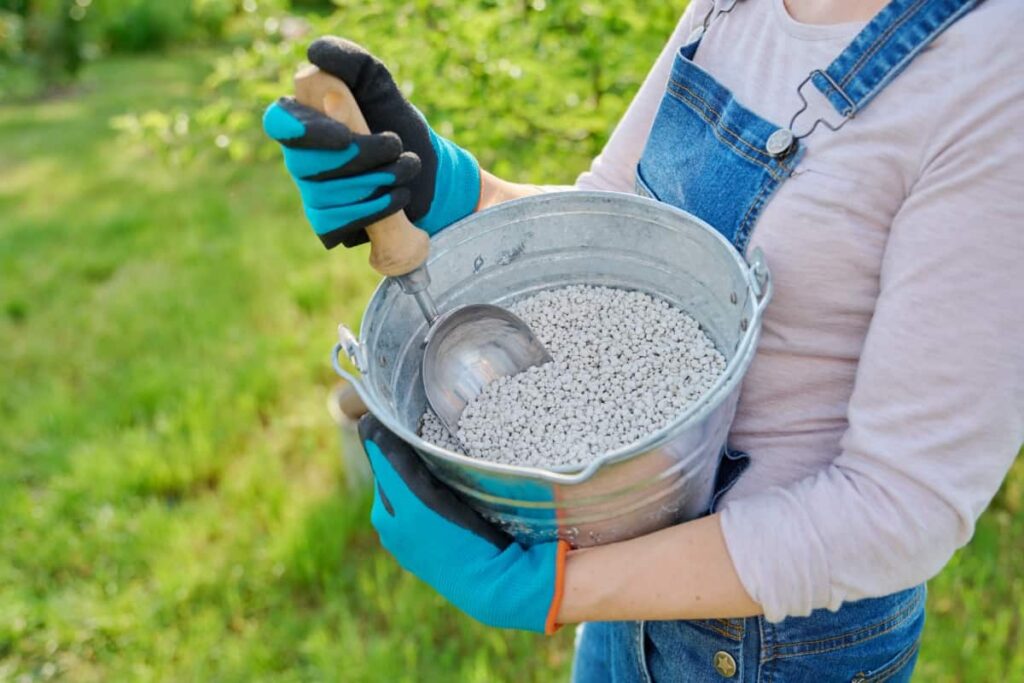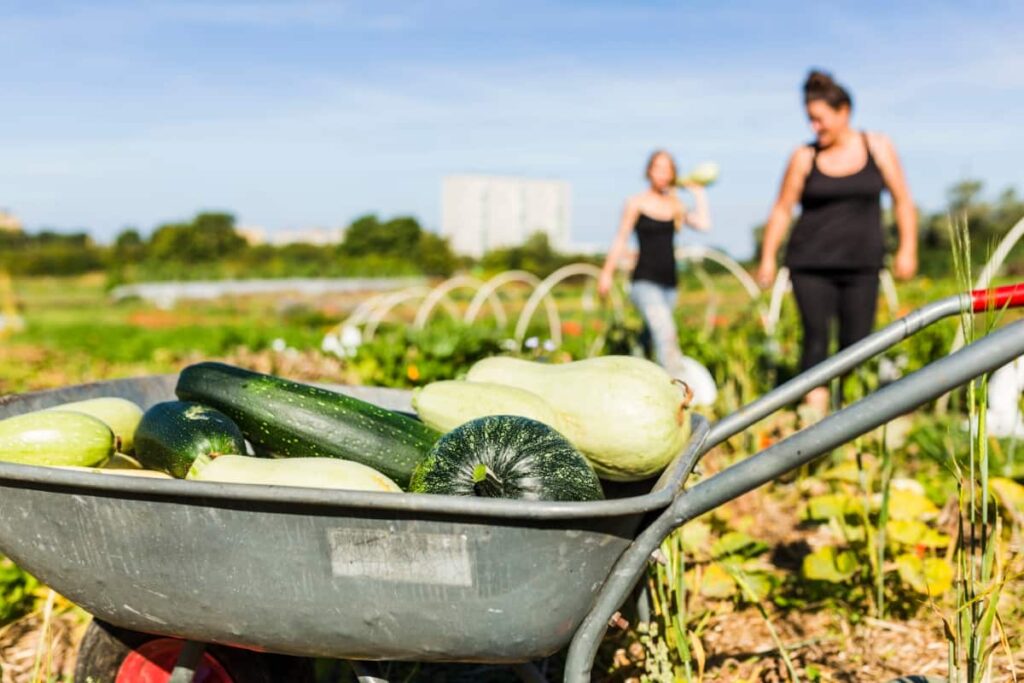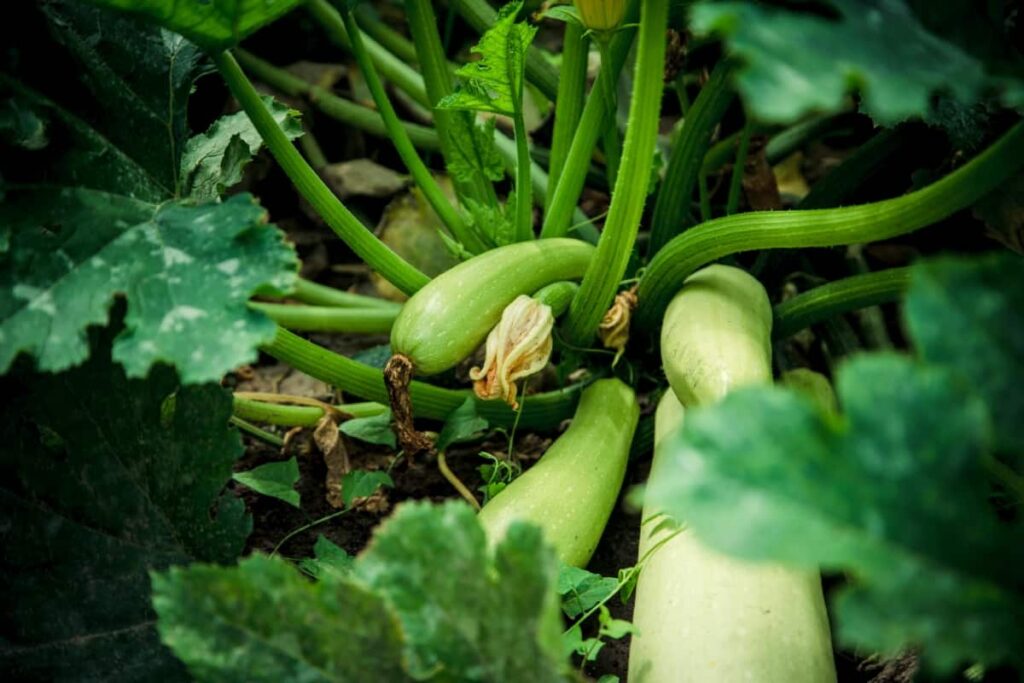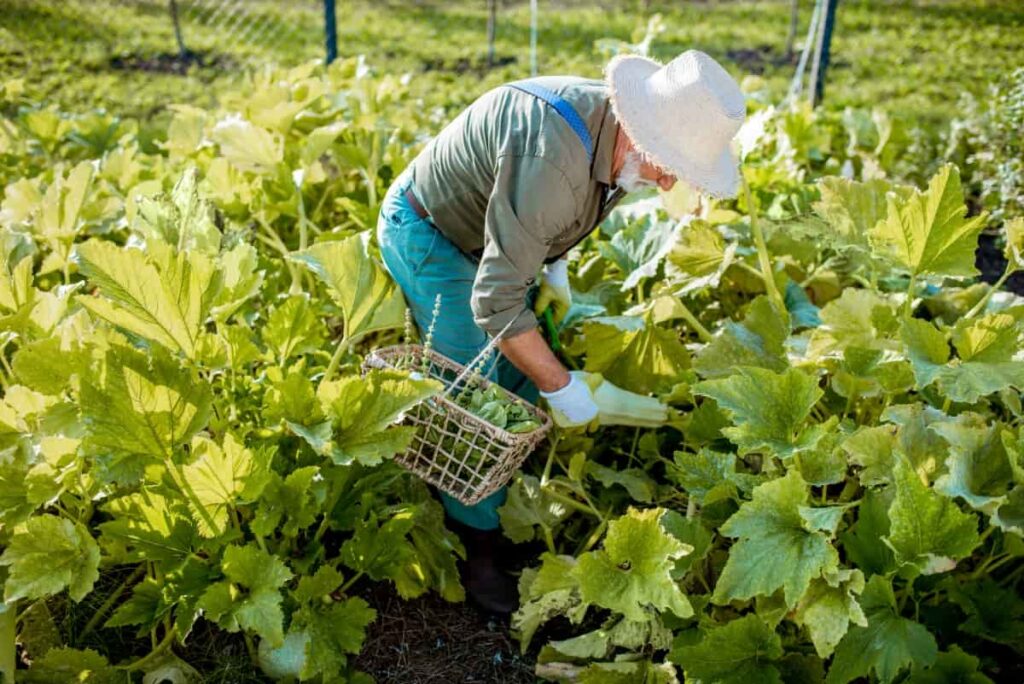Squash is a popular vegetable that can be grown in different climates and soil types. However, to get the best results from your squash plants, you need to provide them with the right fertilizer at the right time and in the right amount. In this article, we will explain what kind of fertilizer is best for squash, when to apply it, and how to do it properly.

Best Fertilizer for Squash
About Squash
Squash belongs to the Cucurbitaceae family, which includes cucumbers, melons, pumpkins, and zucchini. There are two types of squash: summer squash and winter squash. Summer squash are harvested when immature and have soft skins and seeds, while winter squash are harvested when mature and have hard skins and seeds. Some common varieties of summer squash are yellow crookneck, zucchini, pattypan, and scallop. Some common varieties of winter squash are acorn, butternut, spaghetti, and kabocha.
Top Fertilizer Picks for Growing Healthy Squash
Squash plants need a balanced fertilizer that contains nitrogen (N), phosphorus (P), and potassium (K), as well as micronutrients calcium (Ca), magnesium (Mg), sulfur (S), iron, manganese, zinc, copper (Cu), boron (B), and molybdenum (Mo). The ideal ratio of N-P-K for squash is 10-10-10 or 12-12-12. You can use either granular or liquid fertilizer, but make sure to follow the label instructions carefully. Some of the best fertilizer brands for squash are Miracle-Gro, Espoma, Jobe’s, Dr. Earth, and Osmocote.
Organic Fertilizer Solutions for Squash Gardens
If you prefer to use organic fertilizers for your squash plants, you have several options to choose from. Organic fertilizers are from natural sources such as animal manure, compost, seaweed, fish emulsion, blood meal, bone meal, cottonseed meal, alfalfa meal, and rock phosphate. Organic fertilizers are usually slower-releasing than synthetic ones, but they also improve the soil structure and microbial activity. Some of the best organic fertilizer brands for squash are Neptune’s Harvest, Down to Earth, Earthworm Technologies, FoxFarm, and Burpee.
Maximizing Squash Yield with the Right Fertilizer Mix
To maximize your squash yield, you need to adjust your fertilizer mix according to the growth stage of your plants. Squash plants have three main growth stages: seedling stage, flowering stage, and fruiting stage. During the seedling stage, you should apply a high-nitrogen fertilizer to promote leafy growth and strong roots. During the flowering stage, you should switch to a high-phosphorus fertilizer to encourage flower formation and fruit set. During the fruiting stage, you should use a high-potassium fertilizer to boost fruit size and quality.
Choosing the Ideal Fertilizer for Your Squash Varieties
Different squash varieties may have different fertilizer requirements depending on their size, shape, color, flavor, and maturity time. For example, summer squash tend to grow faster and produce more fruits than winter squash so that they may need more frequent fertilization. Also, some squash varieties may prefer more acidic or alkaline soil than others, so you may adjust the pH level of the Soil.
Essential Nutrients for Thriving Squash Plants
Squash plants require various essential nutrients for their growth and fruit production. Nitrogen is crucial for leafy growth, chlorophyll production, and disease resistance. Phosphorus is vital for flower formation and fruit set, promoting strong roots and stems. Potassium is essential for fruit size and quality, regulating water uptake and transpiration. Calcium is for cell wall formation and structure, preventing blossom end rot and cracking.
Magnesium is essential for photosynthesis and enzyme activation, maintaining green color and preventing yellowing. Sulfur is essential for protein synthesis and flavor development, coping with stress and temperature changes. Iron is essential for chlorophyll production and oxygen transport, preventing iron deficiency and chlorosis. Manganese is for photosynthesis and enzyme activation, preventing manganese deficiency and interveinal chlorosis.
In case you missed it: Growing Chayote Squash, Cultivation Practices

Zinc is essential for growth hormone production and sugar metabolism, preventing zinc deficiency and stunted growth. Copper is essential for enzyme activation and lignin synthesis, preventing copper deficiency and wilting. Boron is essential for cell division and pollen tube formation, preventing boron deficiency and fruit drop. Molybdenum is for nitrogen fixation and nitrate reduction, preventing molybdenum deficiency and leaf curling.
Effective Fertilization Techniques for Squash in Home Gardens
To fertilize your squash plants effectively, you need to follow some basic techniques that will ensure optimal nutrient uptake and distribution. Here are some of the best fertilization techniques for squash in home gardens:
Side-dressing: Side-dressing is the technique of applying fertilizer along the side of the plant rows or around the base of the plants. This technique allows the fertilizer to reach the root zone quickly and efficiently. You can side-dress your squash plants with granular fertilizer every 3–4 weeks during the growing season.
Foliar feeding: Foliar feeding is the technique of spraying fertilizer solution on the leaves of the plants. This technique allows the fertilizer to be absorbed through the leaf pores and veins. You can foliar feed your squash plants with liquid fertilizer 2-3 weeks at growing stage, especially when they are flowering or fruiting.
Drip irrigation: The technique of delivering water and fertilizer directly to the root zone of the plants through a network of tubes, hoses, or emitters. This technique allows the fertilizer to be applied uniformly and precisely while saving water and preventing runoff. You can drip irrigate your squash plants with a liquid fertilizer every week during the growing season, using a fertigation system or a hose-end injector.
Eco-Friendly Fertilizing Strategies for Squash Cultivation
To fertilize squash plants in an eco-friendly way, consider composting, crop rotation, and cover cropping. Composting converts organic waste materials like kitchen scraps, yard trimmings, leaves, grass clippings, and manure into a rich soil amendment, improving soil structure, fertility, and microbial activity. This can be done in bins, piles, or trenches and used as mulch or fertilizer. Crop rotation growing crops in succession on the same land to prevent soil depletion, pest infestation, disease transmission, and weed invasion.
Rotating squash crops with other crops from different families can replenish soil nutrients, break pest cycles, suppress diseases, and control weeds. Cover cropping, which covers the soil surface, adds organic matter, fixes nitrogen, releases phosphorus, suppresses weeds, and attracts beneficial insects. These eco-friendly fertilizing strategies can help reduce environmental impact and enhance soil health.
Expert Recommendations for Squash Fertilizer Application
- Test soil to determine its pH level, nutrient status, texture, and organic matter content. Use a soil test kit and send a soil sample to a laboratory for analysis. Adjust your fertilizer type, amount, frequency, and timing accordingly.
- Follow label instructions to ensure the safe and effective use of fertilizer. Read and follow directions, warnings, precautions, dosages, rates, intervals, and methods of application. Wear protective gear when handling or applying fertilizer.
- Water well to dissolve and distribute fertilizer evenly in the soil. Water plants before and after applying fertilizer, especially if using granular or dry fertilizer. Avoid applying too much fertilizer too soon.
Season-Specific Fertilizing Tips for Squash Growth
Squash plants require specific fertilizers depending on their growth stage and season. To ensure a successful harvest:
- Enrich the soil and add compost or manure before planting.
- Apply a balanced fertilizer like 10-10-10 or 4-8-5 to boost flowering and fruiting.
- Fertilize every two to three weeks with a high-potassium liquid fertilizer like tomato feed during the growing season.
- For winter squash varieties, apply a nitrogen-rich side-dressing once fruits form to increase yield and quality. These tips help ensure a successful harvest for squash plants.
In case you missed it: How to Tell When Squash and Pumpkins are Ready to Harvest

Improving Soil Quality for Superior Squash Harvests
Squash plants thrive in rich, moist, well-drained soil with a pH of 6.0 to 6.5. To improve soil quality, test the pH and amend with lime or sulfur if needed. Work compost into the ground several weeks before planting, applying 1 pound per 5 square feet. Mix an organic vegetable fertilizer, like 3-4-4, into the upper 4-5 inches of soil, using 3 pounds per 50 square feet. Add organic mulch like straw or grass clippings to conserve moisture, suppress weeds, and regulate soil temperature.
Common Fertilizing Mistakes to Avoid in Squash Farming
Fertilizing squash plants is crucial for their growth and productivity, but it can also lead to issues if done incorrectly. Common mistakes include over-fertilizing, which can burn roots and leaves, reduce fruit quality, and increase pest and disease problems. Under-fertilizing can result in poor growth, low yield, and misshapen fruits.
Regular fertilization is essential, especially during blooming and fruit-bearing. Fertilizing at the wrong time affects the growth and development of the plants. For example, fertilizing too early can encourage leafy growth, while fertilizing too late can reduce storage quality. It’s essential to fertilize according to the type and stage of growth for optimal results.
In case you missed it: From Garden to Table: A Comprehensive Guide on Growing and Caring for Spaghetti Squash

Conclusion
Optimal squash growth requires a balanced fertilizer rich in nitrogen, phosphorus, and potassium. During the initial planting, apply a high-phosphorus fertilizer to stimulate root development. Subsequently, a nitrogen-rich fertilizer promotes vigorous vine and foliage growth. Apply fertilizers during the growing season, following the recommended dosage to enhance squash yield for a bountiful harvest.
- Management Pests and Diseases in Your Cotton Field
- Sheep Farming Business Plan for Beginners
- Aquaponic Farming at Home: A Step-By-Step Guide
- Profitable Village Farming Business Ideas in 2024
- High-Yield Aquaculture: Fast-Growing Fish for Farming
- Effective Fish Pond Construction Techniques for Beginners
- Irrigation and Water Management in Pineapple Farming
- Blossom to Harvest: Mastering Flowering and Pollination in Papaya Farming
- Pig Fattening Essentials: From Selection to Sale for Beginners
